Smile Line Correction
Smile lines refer to the natural skin crease the is located where the upper lip meets the cheek. The smile lines are also frequently referred to as the nasolabial folds. Others call them laugh lines. They are commonly referred to as smile lines because they become more obvious when one smiles real wide – and sometimes even more so with laughing.
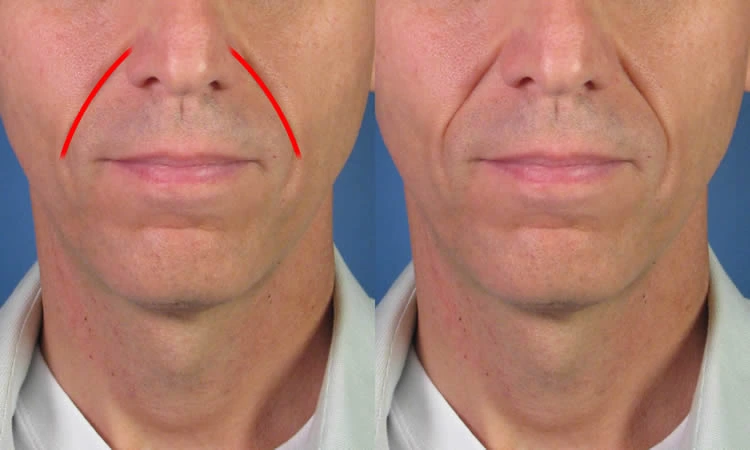 In many patients the aging process (and/or simply genetics) causes the smile lines to become deeper than desired, contributing to unwanted shadowing in this area. This is shown in the adjacent photo diagram as indicated by the red lines that outline the smile lines in this male patient. As you can see, even without smiling or laughing, this patient’s smile lines are quite deep with dark shadowing of the area that is quite obvious. It is precisely this appearance that motivates many patients to seek out treatment to make the smile lines look less obvious.
In many patients the aging process (and/or simply genetics) causes the smile lines to become deeper than desired, contributing to unwanted shadowing in this area. This is shown in the adjacent photo diagram as indicated by the red lines that outline the smile lines in this male patient. As you can see, even without smiling or laughing, this patient’s smile lines are quite deep with dark shadowing of the area that is quite obvious. It is precisely this appearance that motivates many patients to seek out treatment to make the smile lines look less obvious.
One of the most common cosmetic treatments for unwanted deep smile lines is injection of a filler substance underneath the nasolabial fold region. By injecting a filler substance under the smile line, the skin is pushed outward and the crease is made more shallow. These injectable fillers are also referred to as dermal fillers and include well-known products such as Restylane®, JUVÉDERM®, Radiesse® and Artefill®. Some of these injectable fillers like Restylane®,JUVÉDERM® and Radiesse® are considered temporary treatments for deep smile lines – lasting anywhere from 1-3 years. Artefill® is considered a more permanent treatment option for deep smile lines. However, in some cases where the nasolabial fold is really deep, even injection of several syringes of Artefill® does not provide adequate correction of the problem.
Planning Your Smile Line Correction Procedure
Average Cost
$3,000
Average Procedure Time
15 min
Average Recovery Time
None
Post-Op Consultation
2 months
*Procedure pricing and results with Dr. Hilinski may vary. Your personalized treatment plan and pricing will be determined at your consultation appointment.
Permanent Treatment Options
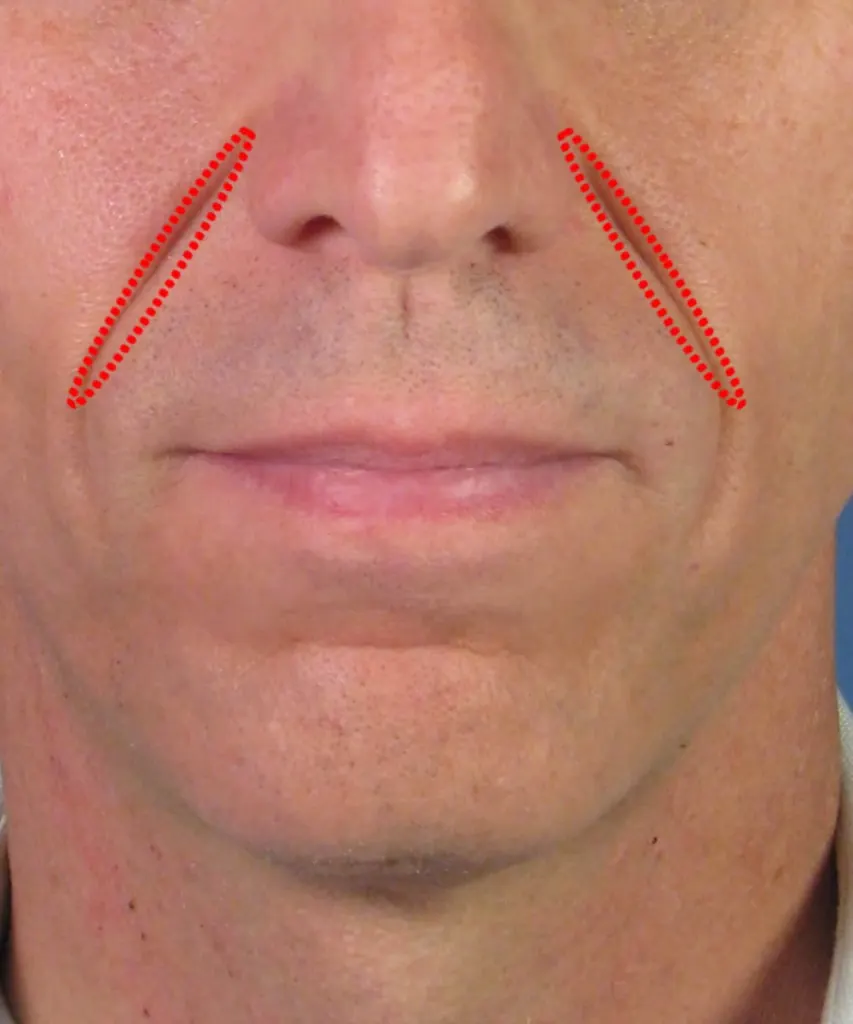 An alternative to the use of injectable fillers for deep, unwanted nasolabial folds is surgical excision of the smile lines. Surgical excision of smile lines offers patients a permanent option for minimizing the appearance of deep nasolabial folds in situations where injectable fillers are simply not providing a satisfactory long-term result.
An alternative to the use of injectable fillers for deep, unwanted nasolabial folds is surgical excision of the smile lines. Surgical excision of smile lines offers patients a permanent option for minimizing the appearance of deep nasolabial folds in situations where injectable fillers are simply not providing a satisfactory long-term result.
Simply put, surgical excision of smile lines involves cutting out the unwanted, deep nasolabial folds. This is visually demonstrated in the adjacent photo diagram by the dashed red lines indicating how the smile lines are cut out along their entire length. Once the deep laugh line has been cut out, the skin edges are then carefully realigned in a manner that involves placement of key sutures (stitches) underneath the skin. By placing these strategic sutures underneath the smile line skin, the fold is made much more shallow. The actual skin layer is then meticulously closed so that the scar ultimately lies in the original smile line. So there is definitely a scar made using this technique, but the scar is aligned such that it looks much like a natural skin fold that is normally already present.
Surgical Excision of Smile Lines
Surgical excision of the smile lines is a procedure that is most often done under local anesthesia where a numbing solution is placed in the skin to make it pain free. In some cases, an oral sedative can be given to make the experience even more comfortable. It is quite rare that a patient is actually put to sleep in order to have this procedure done.
The surgery normally takes about 1 hour to complete in our own accredited ambulatory surgery center procedure room. Patients are then allowed to go home. A low dose narcotic pain medication is prescribed, such as Vicodin or Percocet. Patients are also put on a preventative antibiotic to minimize chances of infection. The sutures (stitches) used to close the skin are typically left in place for about 5-6 days after the procedure. During this time, patients are expected to clean the incision line 2-3 times per day to help optimize the healing process. Patients will experience a mild to moderate degree of soft tissue swelling and sometimes mild bruising along the smile lines. This usually resolves by the end of the first week if it occurs. The scars, like any other procedure, will take about a year to fully evolve and mature. However, most patients feel quite presentable in the public eye in about 7-10 days.
Results of Permanent Smile Line Correction
The following photos show real-life results of the patient highlighted above. As you can easily appreciate, there has been a dramatic improvement in his smile lines. No longer does he have deep shadowing along the nasolabial folds. He still has smile lines – as he should to look natural – they just do not appear as deep and hollowed as they were prior to smile line excision.
So what about the scarring from surgical excision of the smile lines. Well, take a look yourself. There is certainly a scar that is present, but as mentioned above, it is camouflaged in the natural crease between the upper lip and cheek making it quite difficult to see.
Could one obtain this type of result with an injectable filler? Quite possibly. But this would require multiple syringes of a filler placed over a period of several weeks. And if a temporary injectable filler as being used, this would necessitate retreatment in the future to maintain the cosmetic results. Now Artefill® might have been an option as well, which would be more permanent. However, again, several syringes of Artefill® would likely have been needed in this particular case – with costs that would rival the one-time surgical fee involved with smile line excision. And in cases like this where the smile lines are extraordinarily deep, Artefill® injection is not likely to achieve this type of dramatic transformation.
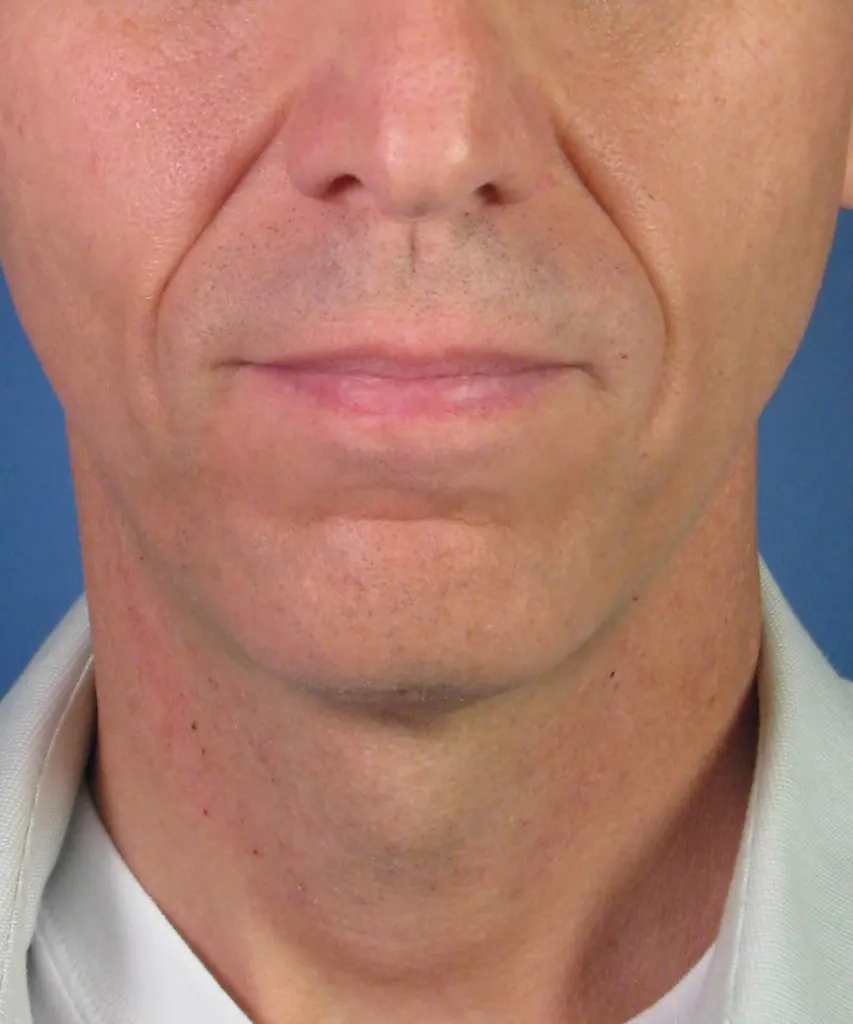
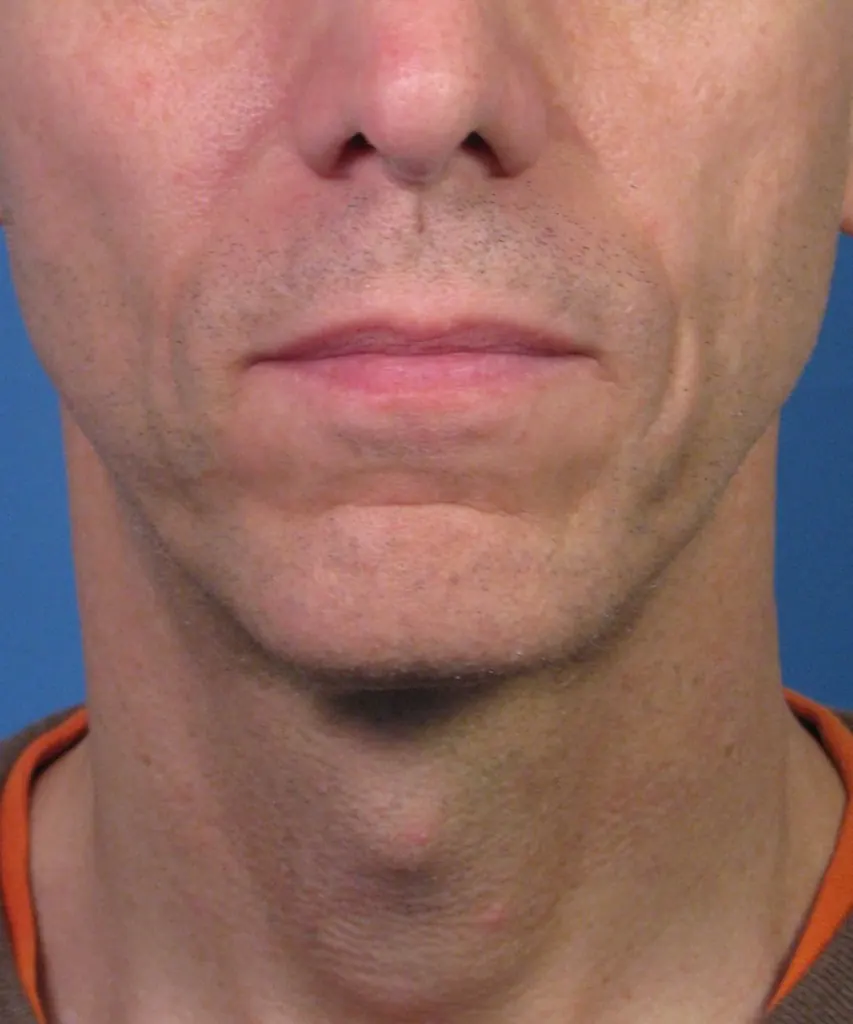
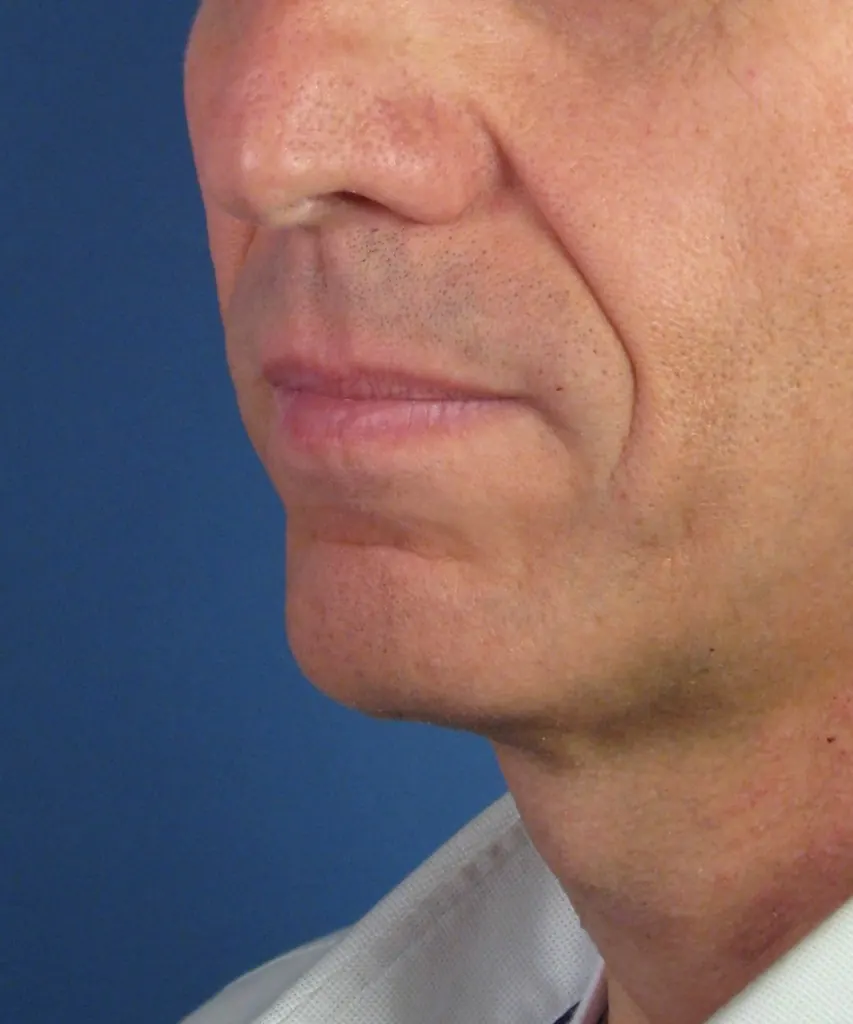

If you are interested in having permanent treatment for unwanted, deep smile line shadows, contact our office today to consult with one of the few facial plastic surgeons in the area that offers this type of surgery.
